Independent Review of Underground Coal Gasification - Report
An independent examination of the issues and evidence surrounding Underground Coal Gasification.
1 Introduction and Background
1.0 The brief for this work, its initiation, terms of reference, scope and requirements for the reports to be provided from this review are set out at Annex 1. Following the Moritorium on Underground Coal Gasification ( UCG ) introduced on 8 Oct 2015, I was commissioned to conduct an " independent and evidenced examination of the issues and evidence surrounding Underground Coal Gasification", in order " to help the Scottish Government formulate future policies or actions."
Backdrop
1.1 A number of key pieces of work have been done that set the scene for or relate directly to UCG in Scotland. They are Jones et al (2004), DTI (2006), Shafirovich and Varma (2009), Osborne (2013), the Scottish Government (2014) Report on Unconventional Oil and Gas by the Independent Expert Scientific Panel and Moran et al (2013) Queensland Independent Scientific Panel Report on UCG Pilot Trials. A useful, simple briefing for parliamentarians on Unconventional Gas was provided by SPICe in July 2016, ( http://www.parliament.scot/ResearchBriefingsAndFactsheets/S5/SB_16-63_Unconventional_Gas_Frequently_Asked_Questions.pdf). It contains some material on UCG.
1.2 The main sources above will be considered in greater detail later in the report. At the outset, however, it is worthwhile observing that, as a result of reviewing material for this report, there is apparently very little new overview material published, in the areas of geology, regulation or technical fields relating to the UCG facets being considered here, in the last decade. Such reviews as exist tend to have come from industry sources, including experienced advocates and contracted academics, often from a technology or marketing perspective. Also, while some more detailed material has been produced in narrow technical areas of unconventional gas extraction ( UGE ), it often actually focuses on shale-gas rather than including UCG in any detail and also cites the same early work as providing fundamental scoping or content.
1.3 In 2004, the British Geological Survey, ( BGS ), (Jones, N.S. et al) produced a study of the UK coal resource with potential for application of new exploitation technologies and it identified the broad nature of a significant coal resource across Scotland. This lies mostly in Carboniferous age coals across the Midland Valley of Scotland - from east Fife to Machrihanish as well as around Canonbie in the Solway area, and in Jurassic bituminous coals around and offshore Brora in East Sutherland (see Fig. 1). The most substantial seams exist in the Midland Valley and the best known are in the eastern half, many outcropping around the margins of the River Forth and lying under the estuary itself. The 2004 report, which remains the signal overview work for this subject, assessed the coals area by area for potential under conventional surface (opencast) and underground mining, coal mine methane, abandoned mine methane, coalbed methane, underground carbon sequestration and underground coal gasification (see Fig. 2). It is with that latter category ( UCG ) that this review has been concerned.
Fig. 1 Map of Scottish Coalfields - with thanks to BGS
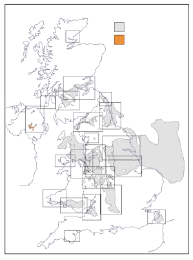
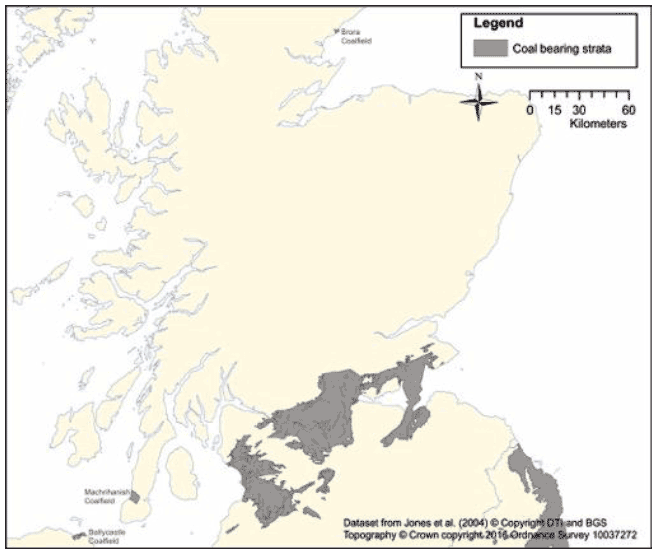
Fig. 2 Areas of UCG Potential in the Midland Valley of Scotland - with thanks to BGS
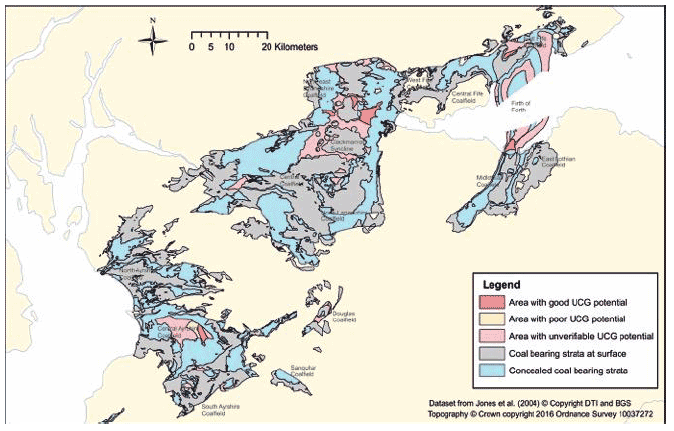
Fig. 3 Technology Schematic of UCG Operation (courtesy of keyseam/CornerStone Magazine)
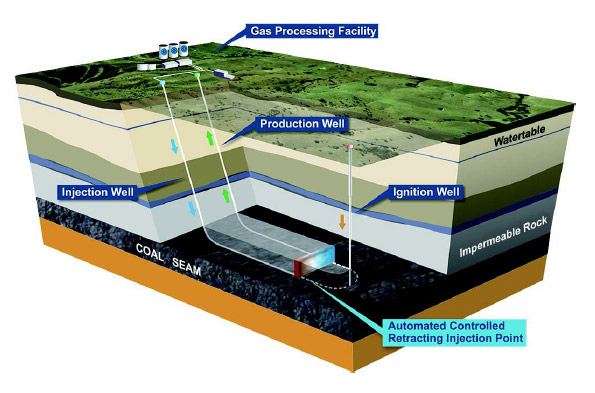
Fig. 4 Schematic of UCG (courtesy of UG Europe/ AEIE ; LEMAR and Skochinsky Institute)
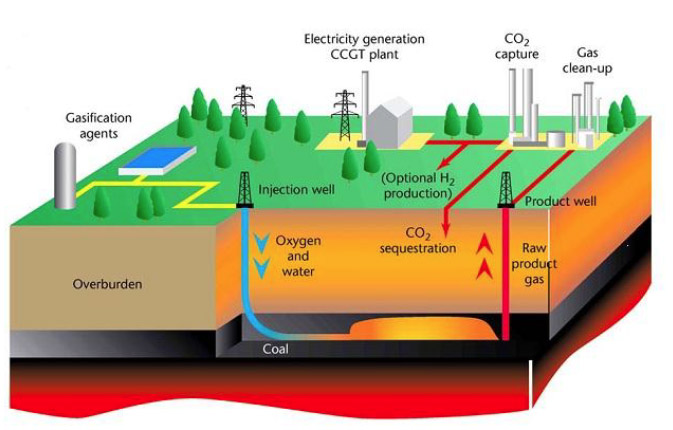
Fig 5a Chinchilla UCG Works, Queensland, Australia. (Courtesy of Linc Energy)
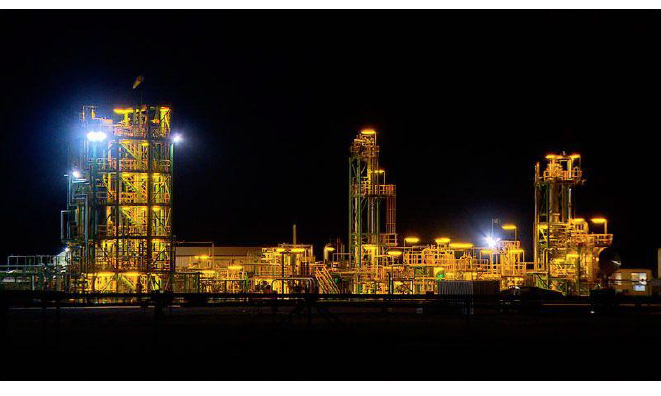
Fig 5b Cougar Energy's Kingaroy UCG pilot works, Queensland. (Courtesy of Cougar Energy)
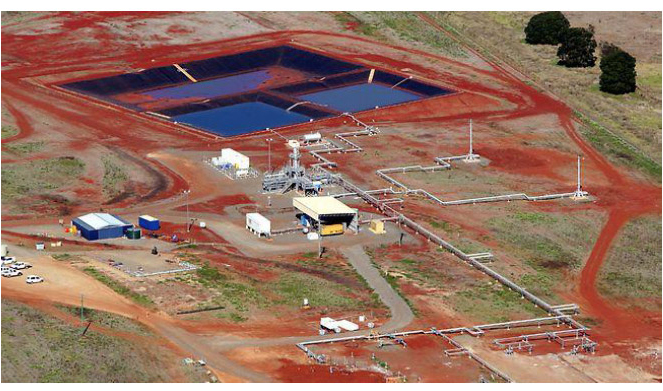
Fig.5c El Tremedal, Spain - EU Pilot UCG Project (courtesy of Purdue University, AEIE and UG Europe)
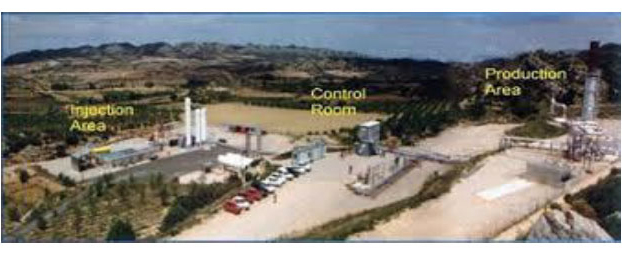
1.4 Figures 3-5 give an initial impression of the processes and technology involved in UCG and the broad appearance of surface operations in examples in Europe and Australia. This will be addressed in detail in Chapter 3 in particular.
1.5 The 1994 Coal Industry Act empowers the Coal Authority to license UCG activity, starting with conditional licences normally for three to five years for exploratory work both on and offshore. Six such licences have been issued in Scotland. There is a licence covering Solway UCG potential and five in the Midland Valley/ FoF area. As confirmed by CA at 23 September 2016, two will expire at December 2016 (Musselburgh and Central FoF, held by Five Quarter), two (Kincardine and Largo at July/August 2018) and one (Frances) at April 2020. The Kincardine, Largo and Frances licences are held by Cluff Natural Resources Ltd. ( CNRL). Coal Authority guidance and classifications frame UCG operations and require engagement of the applicant with DECC (now DBEIS), MoD and relevant other bodies - in this case SEPA, HSE, Crown Estate, Marine Scotland and the local authority.
Fig 6 CA Licence Areas in the Firth of Forth ( FoF) at March 2016 (data from CA)
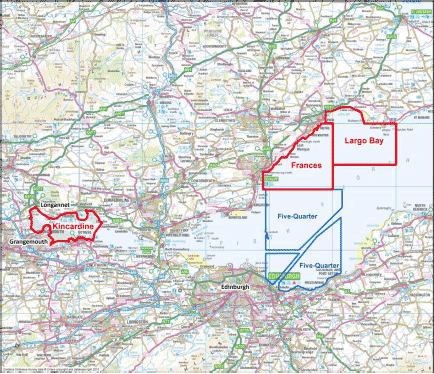
1.6 The general feasibility of extracting gas by UCG in Scotland, specifically in the context of the rocks under the Firth of Forth ( FoF) was researched by a team at the Institute of Petroleum Engineering at Heriot-Watt in 2004-5, published in 2006 for the then DTI, co-funded by them, Scottish Enterprise and Scottish and Southern Energy http://webarchive.nationalarchives.gov.uk/20090609003228/http:/www.berr.gov.uk/files/file30689.pdf
1.7 This report ( DTI, 2006) concluded,
"This initial feasibility stage has shown that the coal geology under the FoF is suitable for a large-scale UCG project supplying gas to existing power stations and chemical processing in the area. The surrounding geology and hydrogeology in the lower reaches of the river are also favourable to UCG operations."
1.8 It continued that,
"The next phase is a detailed investigation of the geological conditions of the near-shore target areas. This will involve new exploratory drilling, a 3D seismic survey and a consultation process, with directional drilling specialists to design the long- reach wells and underground completion for the UCG process. The potential for local CCS needs to be further investigated. Significant investment will be required and a phase of consultation, economic evaluation and further work on UCG as a clean coal option under the Government's CAT Strategy is anticipated. The study has also suggested areas of further research in CRIP (Controlled Retraction Injection Point) control and down-hole operations.
1.9 "A successful development in the FoF could lead to widespread adoption of near-shore UCG on the NE coast of England, the South Wales coast and around the Mersey area. The export potential of the technology could be very significant."
1.10 It also stated that,
"Previous scoping studies suggested that the coal basins of the River Forth could provide a suitable site for the first UCG project in the UK. Other studies have indicated that the most significant environmental concerns for UCG are the risks of groundwater contamination through gas escape and leachate migration. Careful site selection, process control and post-gasification site management should minimise those risks."
1.11 Essentially this set out the main headline issues for UCG at the time and these largely remain the case.
1.12 The overall context for consideration of UCG issues is set in terms of climate, geology, energy policy, environmental, health and safety and other operationally relevant regulation including the initial land-use planning arrangements. The EU, UK and Scottish legal frameworks are also critical and issues span a wide range of subjects and jurisdictions. Much of the relevant material on other unconventional hydrocarbons and unconventional gas extraction, whilst not directly transferrable, is potentially of value and broad considerations of resource efficiency and use as well as integrated planning of the utilisation of underground dimensions of the planet could be considered in scope.
1.13 Points of entry for these subjects and their literatures include:
EEA SC (European Environment Agency Scientific Committee) Report and links considering how best to integrate consideration of aspects of the underground.
and, for example the EU-level work done by EASAC
http://www.easac.eu/fileadmin/Reports/EASAC_ExecSummary___Statement_ShaleGas_Extraction_combined.pdf
For simple visual understanding of the technology, operational issues and how UCG works - Professor Colin Snape's (2013) presentation:
http://www.ieaghg.org/docs/General_Docs/Summer_School_2013/colin_Snape_UCG_SEC.pdf
For public health,
and, generally the Smith Shale Gas task force, Scottish Independent Expert Panel and Queensland Independent Scientific Panel reports, to be considered further below, in addition to references above.
1.14 I would also stress here that not least given the confusion evident in the public mind and in the media about the technologies involved in UGE, generally, I have sought not to use other UGE literature unless there was no or poor UCG coverage of a specific area and the use of other sources is helpful to allow seemingly valid inference or interpolation. This is the case for some aspects of issues around markets, community, health or regulatory frameworks but should not be interpreted strictly. It is also important to observe that while some technology and geology basics remain the same, economics, operational activity and politics among other factors continue to develop and so some material is quickly out of date, as developments (oil price, actively interested private operators, overseas legal cases etc.) during the preparation of this report have shown. And at this point, I would argue that we simply do not know enough to address the various aspects of UCG satisfactorily and, were the industry to be allowed to progress, a contemporary assessment of conditions and refreshing of key dimensions would be highly advisable. This will be clarified later.
1.15 The subject of UCG has been under consideration and addressed periodically for a century and more. Several key studies, some already mentioned, have taken place and these key works are extremely useful. But there is not an accessible or comprehensive literature on UCG. More recently, for UGE generally and for shale gas (hydraulic fracturing, HF) specifically, three pieces of work are very important. One was the Scottish Government (2014), the Independent Expert Panel Report which can be read and considered on its own merits without further glossing here. Secondly the Queensland Independent Scientific Panel on UCG ( QISP/Moran et al, 2013) to which I will return. But thirdly, in the UK context, one of the more comprehensive recent UGE studies and processes that considered relevant issues and made firm recommendations to the UK Government on how to progress, albeit for HF, is the Smith Task Force's work and it is very useful.
1.16 Lord Chris Smith chaired the Task Force on Shale Gas during 2014 and 2015. https://www.taskforceonshalegas.uk. "The Task Force on Shale Gas was launched in September 2014 to give careful consideration to public concerns, and to provide an impartial and transparent assessment of the potential benefits and risks of shale gas extraction to the UK." It reported Final Conclusions and Recommendations on 15 December 2015. Its conclusions were as follows: "Shale gas can be produced safely and usefully in the UK, and can help the UK with the transition to a renewable economy, provided the strictest environmental standards are in place." This is their overarching conclusion, but they concluded that "exploratory drilling should go ahead as soon as possible, in order to establish clearly how much gas is available and what sort of industry might be possible."
1.17 The report found that, "provided the highest regulatory and industry standards, (are applied) there is no more risk to the public from fracking than other comparable industries." Chris Smith went on: "Our conclusion from all the evidence we have gathered over the past year is clear. The risk from shale gas to the local environment or to public health is no greater than that associated with comparable industries provided, as with all industrial works, that operators follow best practice."
1.18 "The size of the UK industry's impact will depend on its (as yet unknown) potential output. We recommend that a number of exploratory wells should be allowed to go ahead, under the very strict environmental safeguards that we have outlined in our previous reports, in order to establish a much clearer picture of where and how much recoverable gas there is in the UK. Only when we have a better understanding of how much gas could be recovered in the UK will the public be able to make an informed decision as to whether they support it."
The Task Force is convinced that gas has a role to play as an interim energy source over the short and medium term. However, the Task Force insists that even exploratory drilling must not be allowed to restrict or prohibit the ongoing development of a renewables and low-carbon energy industry to meet the UK's mid-to-long-term energy needs. In its third report the Task Force called on Government to commit to applying its energy specific revenue to investment in R&D and innovation in CCS (Carbon Capture and Storage), and is therefore disappointed at the government's decision to withdraw their £1billion support for CCS demonstration projects.
1.19 "A summary of final recommendations and best practice is as follows:
- Transparency must be placed at the heart of any nascent shale gas industry. Operators must agree to full disclosure of the chemical content of materials used in shale gas exploration and production and agree that the specific composition will not exceed levels mandated by the Environment Agency. The Task Force does believe operators must do everything possible, and be transparent, in seeking to minimise the effects that their works will have on nearby residents.
- Baseline monitoring of air, land and water should begin as soon as a site has been identified.
- Operators must be held to the very highest standards for well integrity. Operators must commit to using only the very best materials and techniques, and to allow independent monitoring of the site, with the community involved in an oversight role, to ensure that any indication of a failure of well integrity can be identified quickly and remedied.
- The process of "green completions", recently made compulsory in the US, should also be mandated in the UK for production wells. The Task Force would wish to see no venting of gases, and for the exploratory phases small time-limited flaring permissions granted only when necessary.
- Local residents should have a direct role in monitoring any operations in their area. Monitoring of sites is essential. The Task Force believes that, in order to foster trust between operators and the communities in which they wish to work, inspections must be carried out by an appropriate regulatory body with community representatives able to attend to ensure complete transparency.
- The Government must commit to ensuring that the regulatory system for the shale gas industry is robust and fully resourced. The existing regulatory system is currently fit for purpose, as it will inevitably take time for a new industry to grow. If a shale gas industry does develop, however, the Government should explore the possibility of creating a bespoke regulator specifically to oversee this industry, to assume the current responsibilities of the Environment Agency, Health and Safety Executive and the regulatory responsibilities of the Department of Energy & Climate Change.
1.20 "On the economic impacts explored in the fourth report, the Task Force is convinced that a shale gas industry in the UK has the potential to create thousands of jobs directly and support a wider supply chain indirectly. If it proceeds, the Government must commit to appropriate skills training in areas in which shale gas production will occur. The Task Force concluded that a domestic shale gas industry provides a clear means of strengthening the UK's energy security and mitigating against potential risks to energy supply. Lord Smith said, 'Without exploratory drilling the economic impacts of shale gas remain largely unknown. However, we make two strong recommendations to make sure the benefits are felt. First, the Government must commit to appropriate skills training in areas in which shale gas production will occur. And second, we recommend that operators and Government specify details on how the creation of successful production sites will benefit residents living nearby.'
1.21 "The Task Force further called on operators (or UKOOG) to outline exactly how they intend to provide £100,000 of community benefits for exploratory well pads. Local communities have the right to know how they will benefit and, where possible, should have a say in how they benefit. For all wider community payments, the industry and Government should define exactly what is meant by 'communities'. Additionally the administration of community benefits payments should involve residents and local authorities working together, supported by the operators."
1.22 I have quoted this at length as I think these findings have considerable merit and bear some comparison with consideration of UCG. I do not necessarily share their conclusion however, as I will go on to clarify, not least as there is for me a logical break between accepting that resource scale and impacts are insufficiently known, public engagement and compensation arrangements are unclear, and there is a fundamental dependence on high standards of operator performance and regulation, both being urged and assumed to achieve best practice, i.e. between identifying the issue and it being satisfactorily addressed. As this is not always achieved, it is hard to set this permissive conclusion comfortably against the precaution required.
1.23 The Queensland Independent Scientific Panel ( QISP) Report on UCG Pilot Trials, undertaken three years before the state imposed a ban on UCG, took a related, permissive approach but proposed a further review stage be undertaken when work should stop at the end of the pilot phase, before full operational scale demonstration. QISP (Moran et al, 2013) sets out life cycle process elements for UCG and acknowledges receipt of a great deal of data from the three (then two) operators involved. The report covers very useful ground, as follows:
1.24 "Underground coal gasification ( UCG) is a technology that has been in use in various forms for many decades. Queensland is possibly currently leading the world in UCG technology development and testing. The Queensland government needs to come to a conclusion regarding UCG in the context of its broader energy policy in the medium and longer terms. A great deal of coal that is economically inaccessible to mining (too deep or poor quality) and from which coal seam gas will have been extracted could potentially be a source of syngas in the future.
1.25 "The Queensland government approved three UCG trial sites over a period of years with a view to making their own assessment. The Independent Scientific Panel ( ISP) was established to assist government with these assessments. The main roles of the panel were to apply individual and collective expertise to analyse, assess and evaluate various technical and environmental factors and to report the outcomes of the trial activities including recommendations on the prospects and future management of UCG in Queensland.
1.26 "The two companies that have provided pilot trial reports that are the subject of this assessment are Linc Energy and Carbon Energy. Both companies have developed versions of the controlled retracting injection point ( CRIP) technology. [Note that the precise description of the abbreviation varies between industry sources.] The reporting process was designed around the combination of the operational life cycle (site selection -> commissioning -> operation -> decommissioning -> rehabilitation) and a conventional process industry risk assessment. Both companies have used their extensive technical databases, which have been gathered from experience of a number of gasifiers with evolving technologies. The integration of technical data into the necessary risk assessment is an important challenge in the process.
1.27 "Both companies have demonstrated capability to commission and operate a gasifier. Neither company has yet demonstrated their proposed approach to decommissioning, i.e., the self-cleaning cavity, is effective. The ISP remains open to the possibility that the concept is feasible. However sufficient scientific/technical information, particularly relating to decommissioning, is not yet available to reach a final conclusion. Important work has been undertaken but more is yet to be done. For example, neither company has gained access to a gasified cavity, sampled it and provided information on the current contents and condition of surrounding materials.
1.28 "At mid-2012, neither company had completed a burn of sufficient duration to create a final cavity of the dimensions that are expected under a commercial process. Until this is done it is difficult to come to a final conclusion regarding the technology. Given this situation, the ISP believes it would be pre-emptive to consider commercial scale. However, given the considerable investment by the companies and Queensland government to date, and the undoubted future importance of UCG as a viable energy source of global significance, the ISP is of the view that the gasifiers currently operating should be permitted to continue until a cavity of significant dimensions is available for full and comprehensive demonstration. At that time, commercial scale UCG facilities could be considered. There is more work to be done on the design and environmental and operational safety for multi-panel operations.
1.29 "Given the pilot project reports presented, the ISP has come to three overarching recommendations and eight specific recommendations. The latter cover each of the life cycle stages (5), the interaction between CSG and UCG (1) governance (1) and the question of commercial multi-panel operations (1).
1.30 "Following consideration of the materials made available to the ISP from companies and in the public domain, the ISP has come to the following overall conclusions.
- Underground coal gasification could, in principle, be conducted in a manner that is acceptable socially and environmentally safe when compared to a wide range of other existing resource-using activities.
- The ISP is of the opinion that for commercial UCG operations in Queensland in practice first decommissioning must be demonstrated and then acceptable design for commercial operations must be achieved within an integrated risk-based framework.
1.31 "Consequently, the ISP makes the following three (3) overarching recommendations.
Overarching recommendation 1.
The ISP recommends that the Queensland government permit Carbon Energy and Linc Energy to continue the current pilot trials with the sole, focused aim of examining in a comprehensive manner the assertion that the self-cleaning cavity approach advocated for decommissioning is environmentally safe.
Overarching recommendation 2.
The ISP recommends that a planning and action process be established to demonstrate decommissioning. Successful decommissioning needs to demonstrate the self-cleaning process and/or any necessary active treatment. To achieve this:
1. A comprehensive risk-based plan for decommissioning must be produced;
2. The Plan must take account of the fact that both companies now have connected cavities suitable for demonstration [Linc Energy is still gasifying];
3. The Plan must include at a minimum a conceptual model and relevant numerical models, a sampling and verification/validation strategy, and event-based milestones that, where possible, are time bound.
Two significant phases are recognised: a. Sampling of the zone surrounding the cavity; and b. Direct cavity access.
4. The government must establish a process by which the plans and their implementation are assessed for adequacy.
Overarching recommendation 3.
The ISP recommends that until decommissioning is demonstrated, as per Overarching Recommendation #2 no commercial facility should be commenced." Moran et al/ QISP (2013)
1.32 I will return to this work and its relevance in the technology and conclusions chapters of this report.
1.33 Business and Market Context
Not only has the price of oil (and gas) fallen and risen during the period of this review but the number of overtly interested players and active licences has reduced during this year. First Riverside Energy and then Thorton New Energy let their interests lapse, with Five-Quarter picking up some of the licences albeit temporarily. At this point, following the announcement that it was ceasing to trade in the UK, Five-Quarter Energy Ltd. also exited from Scotland in March 2016, leaving Cluff Natural Resources ( CNRL) as the only company remaining in play with conditional licences in place. Whilst other company data were gathered, I have only presented in Annex 2 information concerning CNRL in the Scottish context. Nonetheless, Cluff announced that it too would cease all expenditure relating to its Forth projects in January 2016.
1.34 Five-Quarter in particular stated directly (on their website - http://www.five-quarter.com) that "global market conditions have changed, North Sea activities are in rapid decline, and there is considerable uncertainty about the direction of Government strategy for energy. Five-Quarter has been unable to persuade the British Government to provide supporting statements to allow it to proceed with negotiations for FDI." Uncertainties, created or influenced by both government and gas markets, as well as their knock-on impact on investors both in the UK and from overseas, while not the only factors, were raised repeatedly as inhibitors of development. Without extension, or further action by CA, all current licences will expire in 2018.
1.35 Review Approach
This report responds to the brief as set out by SG, with one specific change. In discussion with the project team, with members of the group responsible for the previous report on unconventional gas, SG (2014), upon which aspects of this report builds, and with some of the main stakeholders in preliminary conversations, it became apparent that a standing advisory group reflecting these interests, was unlikely to work. It was clear it would risk being burdensome, more costly, challenging to manage and unnecessary, not least given the ease of direct access to the main individuals and bodies involved, the strongly divergent views held by some of the parties, inevitable conflict over such information as might be used and differing interpretations based upon fundamental philosophical differences as well as the changing, more polarised nature of the Scottish context. Inputs have been secured from all of the relevant groupings and individuals recommended by Scottish Government and identified by me and by those I initially contacted, as having useful and relevant contributions to make at this stage. It is my judgement that the interview process allowed a safe space for contributors to input and a standing group would not have facilitated a better process or a stronger or clearer outcome.
1.36 Identifying the structure of the Report
In considering the UCG resource and its potential, this review has involved looking at a range of framing dimensions: climate, geology, energy policy, economics, regulatory and planning issues and their fit, community views, operational experience and issues of the longer term - liabilities and monitoring, as well as the areas of uncertainty identified. The rest of the report will largely follow these section elements in the following chapters before making recommendations for the future. I have looked at these issues through researching cases, sites and operators and the available and accessible literature on the technology itself and cases written up for publication as well as interviewing 35 people from 23 stakeholders identified as critical to assessing these aspects of context, the history of UCG and lessons so far, the nature of the resource, its future potential and the factors relevant to safe and supportable exploitation.
1.37 Interviewees are listed in Annex 2A. Interviews were generally conducted using a simple questionnaire. Some interviewees chose to respond to the advance sight of the questionnaire as well as participate in the interview. Some did not address all questions based on expertise, authority or personal preference. Some supplementary information from these interviews is appended at Annex 2B. Others contacted and who provided input to the study via telephone or skype conversations or email exchanges are at Annex 2C. Of those approached, only Ofgem declined to participate.
1.38 The sites and operations considered for the study and about which data were sought are listed in Annex 3.
References
DTI (2006) Creating the Coalmine of the 21 st century: the feasibility of UCG under the Firth of Forth. Carbon Abatement Technologies Programme. Project Summary 382. (Commonly referred to as the "Heriot-Watt Report")
Jones, NS, Holloway, S Creedy D P, Garner, K, Smith NJP, Brown MAE and Durucan, S. (2004) UK Coal Resource for New Exploitation Technologies. Final Report. British Geological Survey ( BGS) Commissioned Report CR/04/015N. NERC
Moran, C., da Costa, J., and Cuff, C. /Queensland Independent Scientific Panel for Underground Coal Gasification ( QISP) (2013) Report on UCG Pilot Trials.
http://www.southburnett.biz/pdfs/ispreport.pdf
Osborne, D. (2013) (Ed.) The Coal Handbook - Towards cleaner production Vol 1, Woodhead Publishing, Cambridge. ISBN 978-0-85709-730-9
Scottish Government (2014) Independent Expert Scientific Panel - Report on Unconventional Oil and Gas, July 2014.
http://www.gov.scot/Resource/0045/00456579.pdf
Shafirovich, E. and Varma, A. 2009. Underground coal gasification: a brief review of current status. Indust.Eng.Chem.Res., 48, 7865-7875
Smith, C (2015) Task Force on Shale Gas.
https://www.taskforceonshalegas.uk.
SPICe (2016) SPICe Briefing - Unconventional Gas: Frequently Asked Questions. 11 July 2016; 16/63. Alasdair Reid
http://www.parliament.scot/ResearchBriefingsAndFactsheets/S5/SB_16-63_Unconventional_Gas_Frequently_Asked_Questions.pdf
Contact
There is a problem
Thanks for your feedback